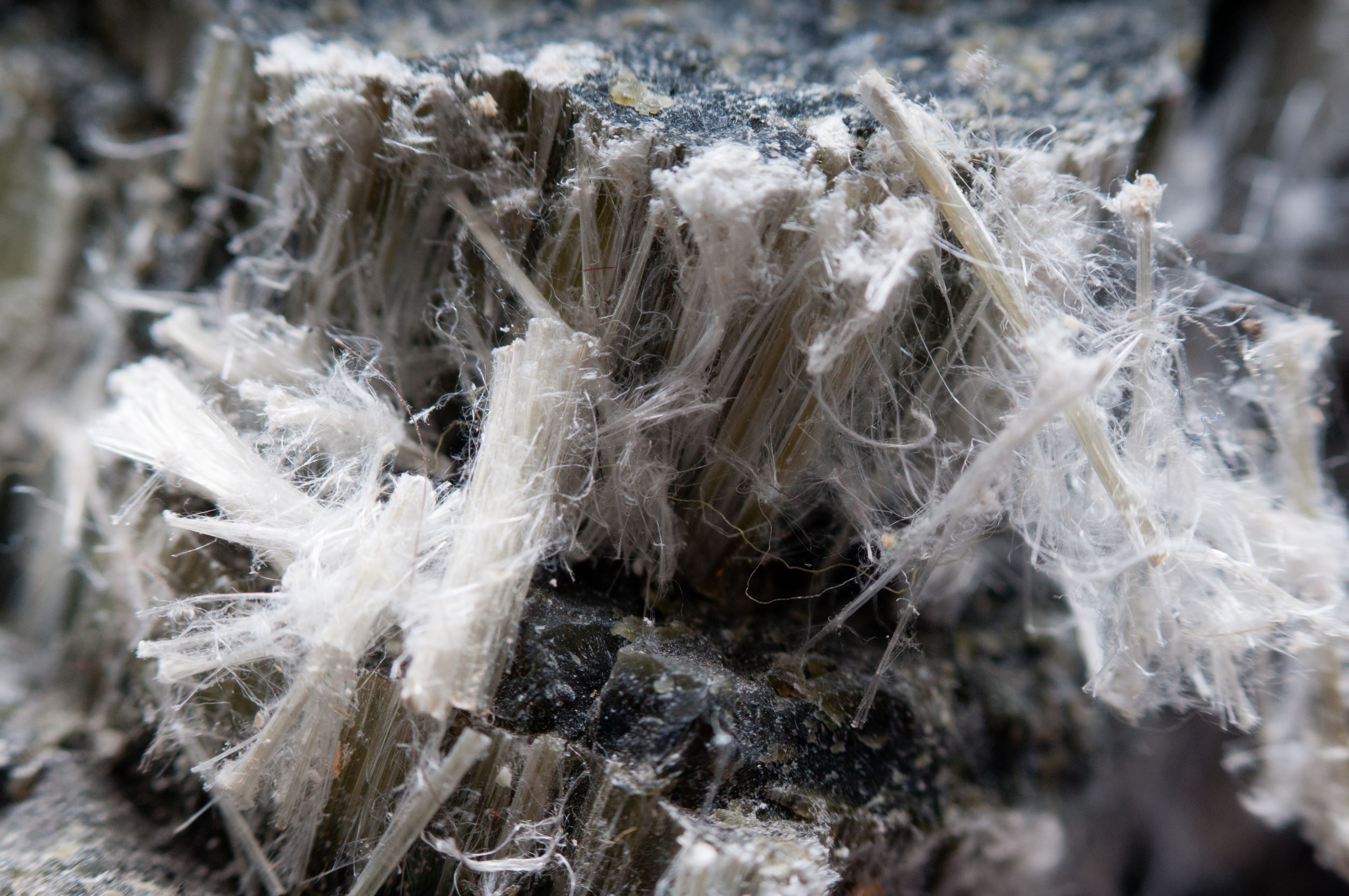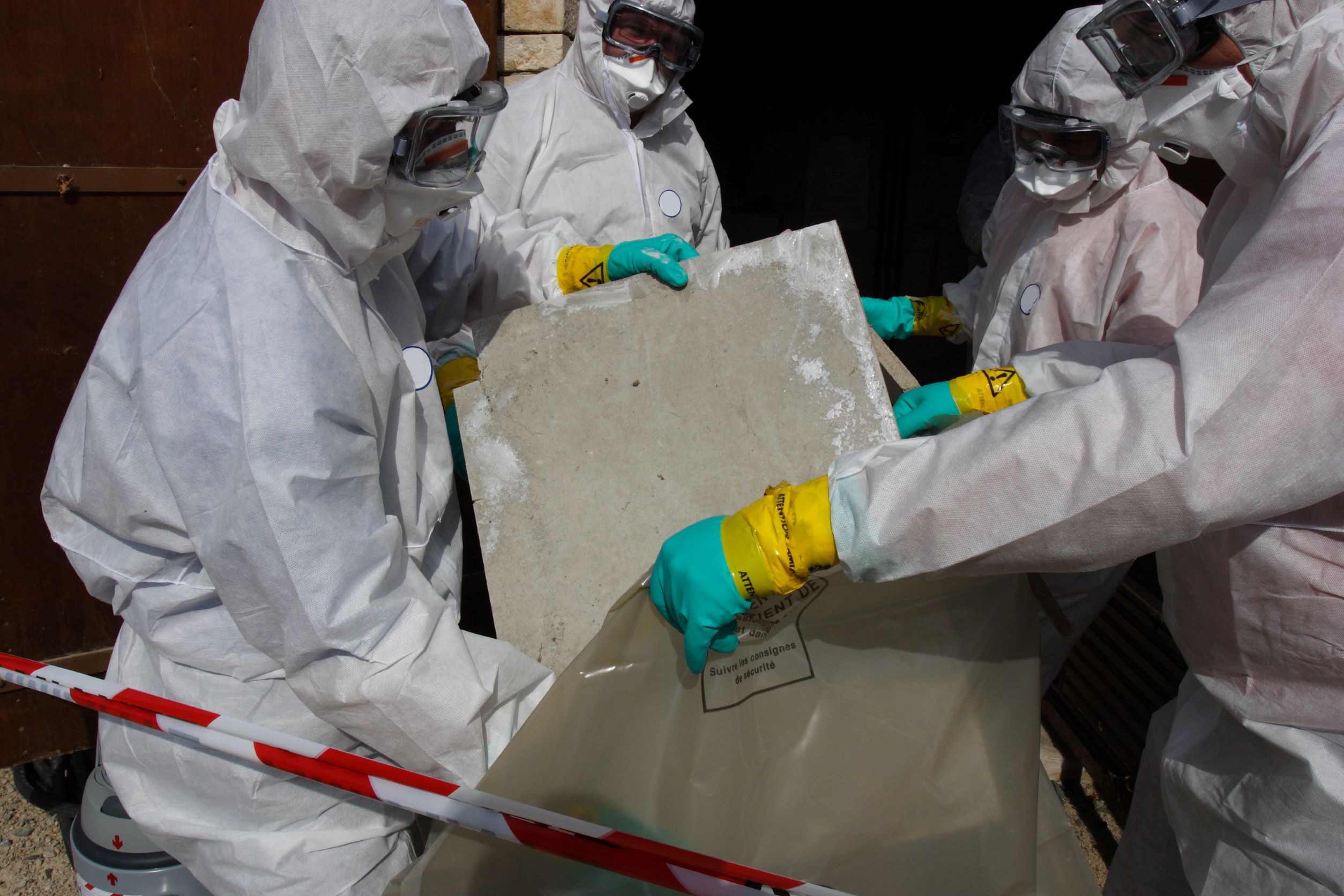Asbestos usage has been around for thousands of years but it became pervasive in a wide range of products and industry processes in the mid 1800s. It was often used as a safety measure due to its fireproof qualities. But exposure by inhalation has now been found to have serious health consequences, such as lung cancer and mesothelioma. On our podcast, All Things Renovation, we interviewed Lindsay Rice from Fairway Demolition about asbestos abatement.
What IS asbestos?
Asbestos is a group of six naturally-occurring mineral that is made up of long, fibrous silicate fibers. Each fiber is composed of many threads that are resistant to heat, fire, and chemicals, and do not conduct electricity.

What products in our homes contain asbestos?
Asbestos can be found in many different construction materials except for those made of concrete or wood. Examples include drywall, textured ceilings, vinyl flooring, roof tiles, and ducting tape.
In the late 1980s, Canada stopped adding asbestos fibers into manufactured materials. However, people were not required to get rid of their existing inventory. If a building was built after 1990, it is considered to be “safe”. Some houses built after that are still being found to contain the old materials.
Should you be worried about your own home?
If you suspect that there are asbestos-containing materials in your home, you don’t have to worry about them unless you are going to be disturbing them. It is good to have the knowledge of what is potentially dangerous so that you don’t inadvertently inhale it while putting an anchor in your textured ceiling or hanging a picture. Another reason to be concerned would be as the material starts to break down over time or due to damage.
How do you test for asbestos?
Before doing a renovation or a demolition, you need to hire a qualified technician to perform a hazardous materials survey. They are trained to know all the sneaky places where asbestos can be hiding in your home.
In British Columbia, if a material contains more than 0.5% asbestos, it is considered to be “containing” and must be properly abated.
What is the protocol when hidden asbestos is found?
If you suddenly find that you have been exposed, you need to let WorkSafe BC know that there has been an exposure. Seal off the room to contain the dust and put up caution tape. Then contact a qualified asbestos contractor to come in and take over its removal.
The contractor will file a Notice of Project with WorkSafe BC that has submittals that go along with it. These include a notice of procedures, what they are removing, the risk assessment, and the hazardous materials survey. This is done 48 hours before stepping foot on site.
On site, the area will be completely sealed off and isolated (vents, doorways, windows). The scale of the project will determine how many transfer stations will be set up (cleaning rooms, showers with hot water) for decontamination. Everything is double bagged in 6 Mil (0.006″) polyethylene bags with asbestos warning labels on them. A spray is applied to encapsulate any minute amount of dust that might be left behind. Then an air quality test is performed.

Where does asbestos-containing material go?
In the Lower Mainland of British Columbia, you can get rid of all asbestos-containing materials at the Vancouver landfill except for drywall. The normal disposal method for this material is to bury it. However, when it gets wet, it leaks toxic gases. The disposal site in Richmond is below sea level, so burial is not an option in BC. It is shipped to Alberta and is buried in its 6 Mil poly bags, sealed off from the environment.
At the landfill, drivers need to have an LT license (license to transport dangerous goods) and every load needs to be accompanied by a waste manifest. This states the type, amount and origin of the asbestos. Asbestos abatement is one of the most documented industries!
To listen to the full episode and read the show notes, visit www.AllThingsRenovation.com or click on the Podcast tab at the top of our homepage at www.woodbeart.com.


